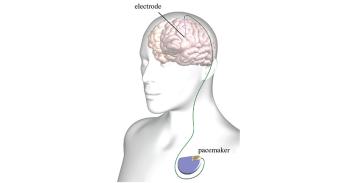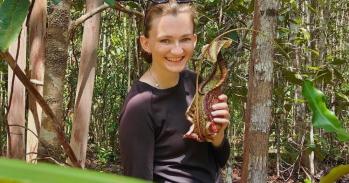A unique three-year project to bridge the divide between science and philosophy – which embedded early-career philosophers into some of Cambridge’s ground-breaking scientific research clusters – is the subject of a new film released today.
A unique three-year project to bridge the divide between science and philosophy – which embedded early-career philosophers into some of Cambridge’s ground-breaking scientific research clusters – is the subject of a new film released today.
Academics in the humanities as well as the sciences are beginning to appreciate some of the difficulties arising from the extreme degrees of specialisation – where we are losing the ability to talk to each other.
Daniel De Haan
The Templeton World Charity Foundation Project, spearheaded by Professor Sarah Coakley, the Norris-Hulse Professor of Divinity at Cambridge, saw three postdoctoral researchers placed into science labs around the University with the aim of addressing the ever-widening gap between those working in the fields of science and those working in fields of philosophy and theology.
For three years, Daniel De Haan, Natalja Deng and Peter Woodford worked side-by-side with colleagues from the Department of Experimental Psychology, the Department of Applied Mathematics and Theoretical Physics (DAMTP) and the Department of Zoology respectively – taking part in cutting-edge research, and being mentored by world-leading thinkers in their subject fields.
It is hoped that the huge success of this project – which saw unusually deep philosophical engagement with working scientists – will be a catalyst for similar experiments both in Cambridge and beyond.
Professor Coakley said: “Top level, path-breaking science can often go on in universities without any connections to the history and philosophy of science which is coming at the same material from a different direction. The philosophical questions are enormously pressing so we were delighted that some truly leading scientists at Cambridge were open to the possibility of having our three young researchers embedded with them.”
Dr Peter Woodford, who worked both in Cambridge’s Zoology labs and in the field in Africa to look at cooperation among meerkats, what makes them behaves the way they do, and how we as humans understand the value of selflessness, altruism and the care of others.
He said: “It was obviously a unique experience for any philosopher to have, seeing what animals are doing in their natural environment and asking why animals do what they do – that’s a central question of philosophy as well as science. The value of pursuing these big questions is to understand what we believe and why we believe it in a better way.”
Dr Natalja Deng, who worked on the cosmology strand of the project, alongside colleagues in DAMPT, said: “What does it mean to ask if God exists? And what does it mean to say that the universe had a beginning? If you ask yourself questions like this, you are doing philosophy.
“In order to do that, you need to talk to both theologians and physicists. They may not be used to talking to one another, but that’s all the more reason to bring them together in conversation. We were an experiment for this.”
Dr De Haan looked at the connections between cognitive neuroscience, psychology and philosophy for his strand of the project. As with his other Templeton colleagues, Daniel received formal training in his chosen subject areas to ensure they were up to date with the latest research and scientific developments in that particular field.
He said: “It was enormously helpful to spend time seeing what the day-to-day routines are, working in a lab and attending lectures. The people in my lab were open to the idea of having someone around from a different background and a different perspective.
“Academics in the humanities as well as the sciences are beginning to appreciate some of the difficulties arising from the extreme degrees of specialisation – where we are losing the ability to talk to each other.”
Added Coakley: “I’m more happy than I could have hoped. This was a unique experiment in how to create a new generation of scholars to learn this agility early in their careers and we have shown that if it’s possible in one of the top universities in the world for scientific and mathematical endeavour, it should be possible in other places, too.”

The text in this work is licensed under a Creative Commons Attribution 4.0 International License. Images, including our videos, are Copyright ©University of Cambridge and licensors/contributors as identified. All rights reserved. We make our image and video content available in a number of ways – as here, on our main website under its Terms and conditions, and on a range of channels including social media that permit your use and sharing of our content under their respective Terms.




